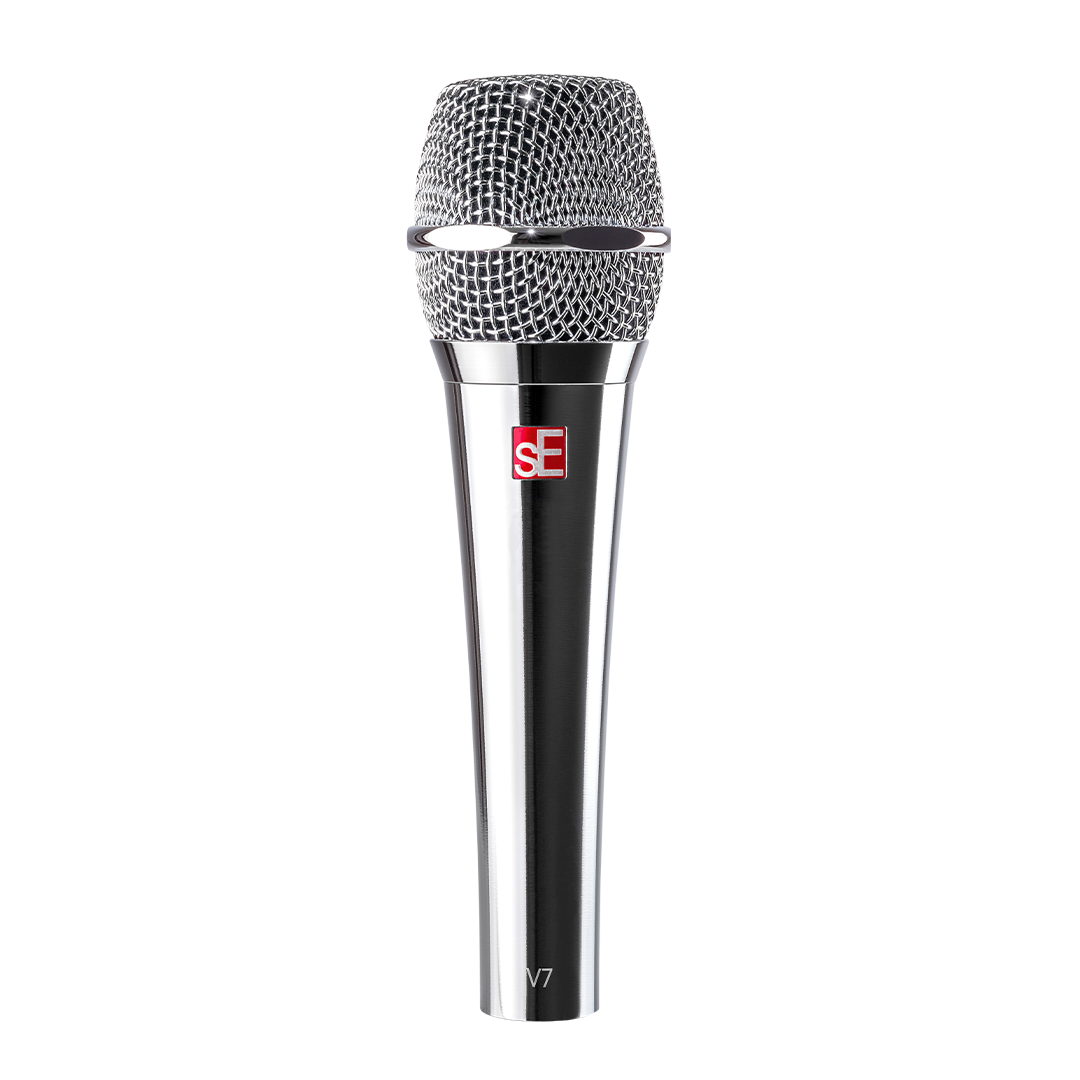V7 BLACK
Almost a Legend AlreadyThe V7 BLACK is an all-black version of our best-selling V7, a dynamic vocal hand-held microphone with a supercardioid polar pattern. It delivers a crisp, open sound that perfectly captures your voice and instruments in the most natural way you've ever heard on stage.
Buy nowV7 BLACK
Almost a Legend AlreadyThe V7 BLACK is an all-black version of our best-selling V7, a dynamic vocal hand-held microphone with a supercardioid polar pattern. It delivers a crisp, open sound that perfectly captures your voice and instruments in the most natural way you've ever heard on stage.
Live performance, rehearsal, vocals, voice, instruments
Inside the V7 BLACK
Inside the Mic Grille
Specs
Downloads
Q&A
How should I store my microphone?
We generally recommend keeping your microphone in its case or original packaging when it is not in use for more than a few hours. If your studio is very clean and safe, it could be OK to leave out on its mic stand when not in use, but if a mic is out of its case, it could potentially be exposed to dust, smoke, moisture, or humidity – which can damage the sensitive parts of the mic – so we recommend avoiding those things at all cost.
What are the differences between your microphones’ polar patterns? How do I choose the most suitable type of polar pattern for my recording environment?
There are no real “right” or “wrong” answers to this question, as different patterns will just provide different types of sounds, and whatever best suits your particular song is usually the right answer! With that said:
- Cardioid – Generally best for recording vocals or other single sources, when you don’t want to hear much of the room sound around the source.
- Omni – This is good when you want a less focused, more “roomy” sound. Think distant drum mics in a great-sounding room.
- Figure-8 – Since this pattern lets the mic “hear” on both sides – front and back – and reject the sounds on either side, it’s handy if you want to record two sources at once from a point in between them, without hearing what’s off to the sides.
- Hypercardioid / Supercardioid – More directional than Cardioid, this is good for spot mics, when you want the sound to be very focused.
My guitar amplifier / drum / horn is VERY loud, and I am concerned about the risk of damage due to loud noise.
For the most part, sE mics can tolerate extremely high SPLs (typically over 135dB) and will be fine in front of even the loudest sources – yes, even our ribbon mics. If in doubt, you can check the specifications on the individual product page.
Which sE mic is best for recording vocals / drums / guitars / etc.?
Use our Find Your Gear page to filter by applications and drill down further according to your specific needs!
How do I clean the microphone from spillage and dirt?
If your microphone has come in contact with dirt or another removable substance, we recommend cleaning it with a very soft, slightly damp cotton cloth. Do not open the microphone up to clean the inside, and make sure you NEVER touch the capsule itself. Cleaning a capsule should only be done by highly trained professionals in a “clean room” environment. If you suspect your capsule needs to be cleaned, please contact [email protected] so we can recommend an authorized local technician.
How do I connect my microphone to my computer?
You’ll need some sort of audio interface to do this – essentially, a box that converts an analog signal into a digital one, and sends the digital signal to your computer software in a way that your computer can understand. Some audio interfaces also include microphone preamplifiers, which raise the signal level from “mic level” to “line level” – if you are using an interface with no built-in preamp, you’ll need to plug the mic into a separate mic preamp first.




